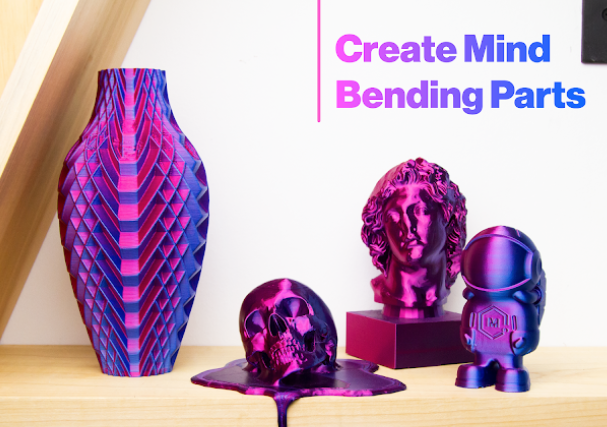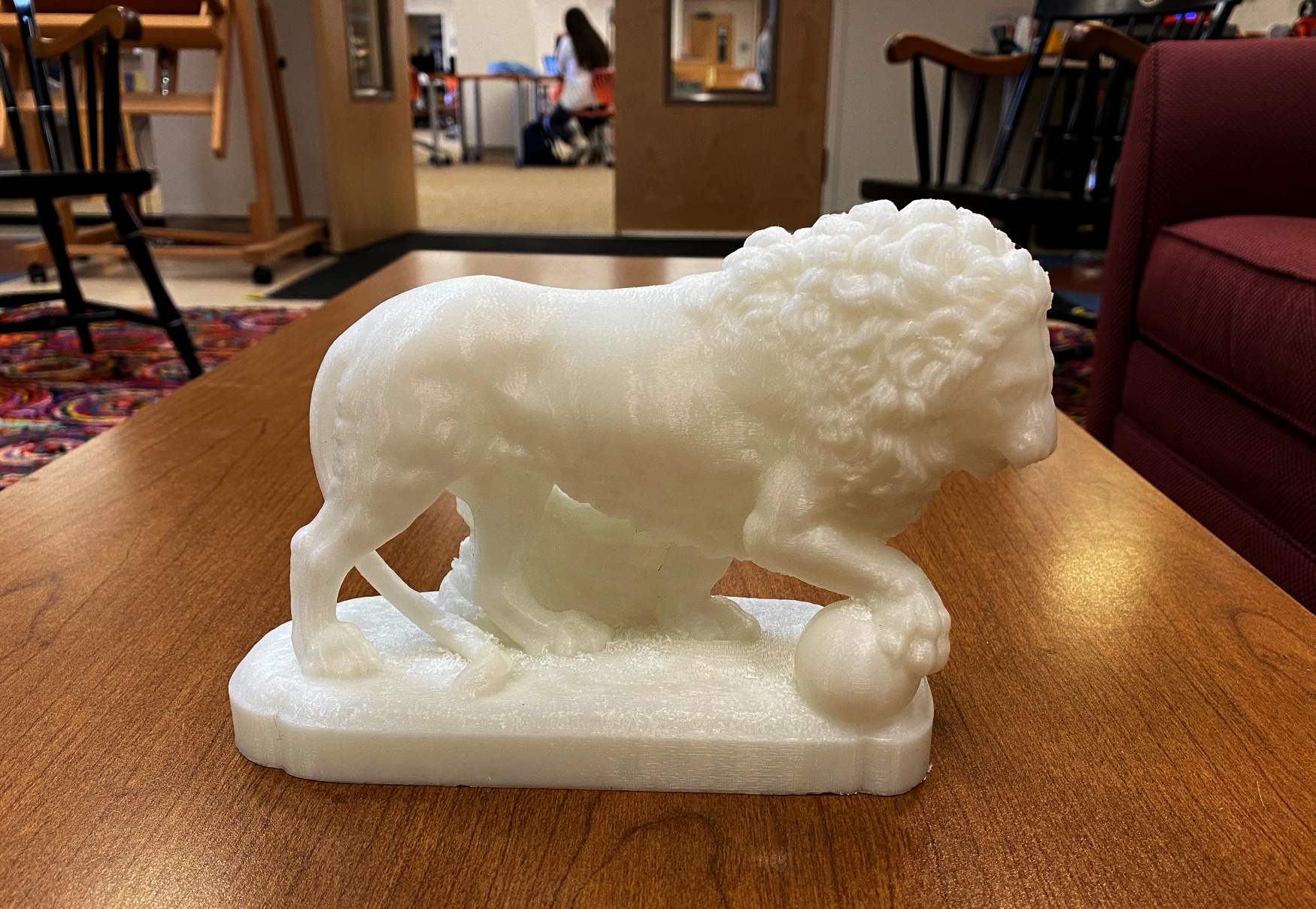Really fun collaboration with the Bowdoin Theater & Dance Department for their production of the 39 Steps.
The shell-shaped footlights with LEDs came out great.
3D scanning, modeling, and printing. Go see the show!
Academic Technology & Consulting
Really fun collaboration with the Bowdoin Theater & Dance Department for their production of the 39 Steps.
The shell-shaped footlights with LEDs came out great.
3D scanning, modeling, and printing. Go see the show!
We 3D scanned the polar bear. Now we are printing a few for some special friends of the Maker Space who will be visiting for reunion this weekend.
“The Class of 1912 presented a sculpture of the polar bear to the College in 1937. It is a life size granite statue designed by Frederic George Richard Roth. The figure stands in front of the entrance to Sargent Gymnasium, and has for many years symbolized Bowdoin College to alumni and to the public .”
Griffin? Chicken? Dragon?
We are not actually certain, but we sure had fun 3D scanning and printing this object for our good friends over at the Bowdoin College Museum of Art

The final product in the Art Museum’s exhibition: “Flora et Fauna: Nature in Ancient Mediterranean Art and Culture”
“…working with David Israel P’25 in Bowdoin’s Department of Academic Technology & Consulting, and Joseph Hluska, Assistant Preparator at the BCMA, to create the replica cauldron featured in Flora et Fauna. Israel produced 3D scans of Protome in the Form of a Griffin, and from those scans created multiple 3D printed models. To begin the process of the creation of the base of the cauldron, Higginbotham supplied Hluska with examples of Ancient Greek cauldrons and the typical forms that they took. Using a coil building technique, Hluska threw the cauldron in two parts and fired the components in the kiln at the Visual Art Department with the assistance of Jackie Brown, Associate Professor of Visual Art. Hluska then manipulated the 3D printed models with a heat gun to fit the profile of the finalized clay vessel. While the original ancient cauldron would have been larger and made of bronze, the replica cauldron featured in Flora et Fauna offers audiences greater context for how an object like the Protome in the Form of a Griffin may have appeared and functioned in its entirety.”
Q: Who wants a museum lion?
A: Everybody!
The Bowdoin Magazine even wrote an article about how we scanned it to create the model: https://www.bowdoin.edu/news/2022/03/a-look-at-the-lions.html
This special lion was printed using Silver Raspberry MatterHackers Quantum PLA Filament

1894 Replica of sculpture by Flaminio Vacca, 1598
The original Medici lions (1598) have since 1789 stood in the Loggia dei Lanzi, Piazza della Signoria, Florence. https://en.wikipedia.org/wiki/Medici_lions
Exterior, Walker Art Building, Bowdoin College Museum of Art, Brunswick, Maine, USA.